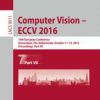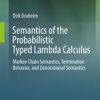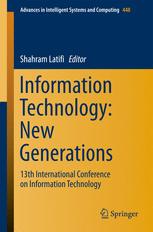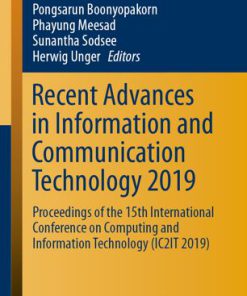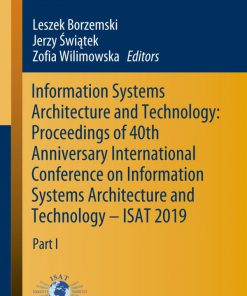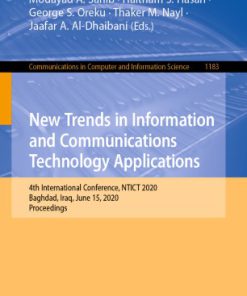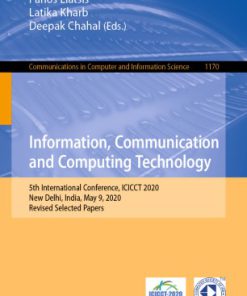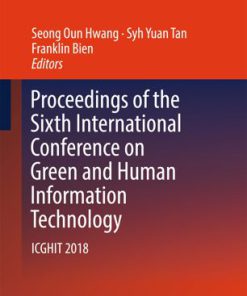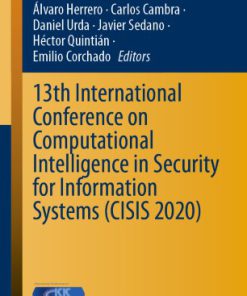17th International Conference on Information Technology New Generations ITNG 2020 1st Edition by Shahram Latifi ISBN 3030430227 978-3030430221
$50.00 Original price was: $50.00.$25.00Current price is: $25.00.
17th International Conference on Information Technology New Generations ITNG 2020 1st Edition by Shahram Latifi – Ebook PDF Instant Download/Delivery: 3030430227, 978-3030430221
Full download 17th International Conference on Information Technology New Generations ITNG 2020 1st Edition after payment
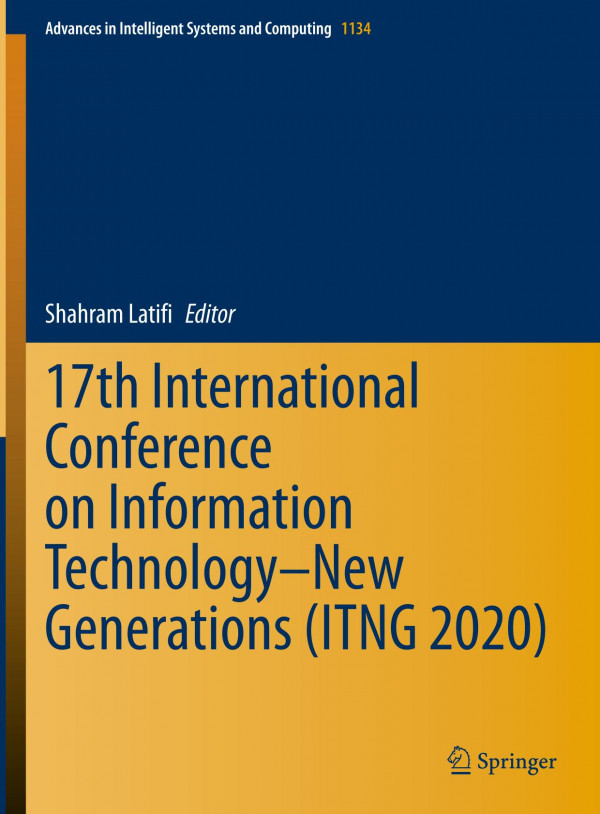
Product details:
ISBN 10: 3030430227
ISBN 13: 978-3030430221
Author: Shahram Latifi
This volume presents the 17th International Conference on Information Technology―New Generations (ITNG), and chronicles an annual event on state of the art technologies for digital information and communications. The application of advanced information technology to such domains as astronomy, biology, education, geosciences, security, and healthcare are among the themes explored by the ITNG proceedings. Visionary ideas, theoretical and experimental results, as well as prototypes, designs, and tools that help information flow to end users are of special interest. Specific topics include Machine Learning, Robotics, High Performance Computing, and Innovative Methods of Computing. The conference features keynote speakers; a best student contribution award, poster award, and service award; a technical open panel, and workshops/exhibits from industry, government, and academia.
Table of contents:
1. Protection Via Business Impact Analysis in a Cyber World: A 3-Part Series
2. The Role of Industry Partnerships and Collaborations in Information Technology Education
3. A Comprehensive Mentoring Model for Cybersecurity Education
4. Observations on the Performance of PQ KEMs
5. Cyber Mission Operations: A Literature Review
6. Android Microphone Eavesdropping
7. Detecting Cyberbullying Activity Across Platforms
8. Assessment of National Crime Reporting System: Detailed Analysis of Communication
9. Using Voice and Facial Authentication Algorithms as a Cyber Security Tool in Voice Assistant Devices
10. Assessment of National Crime Reporting System: Detailed Analysis of the Mobile Application
11. Assessment of National Crime Reporting System: Detailed Analysis of the Desktop Application
12. Toward Effective Cybersecurity Education in Saudi Arabia
13. Intelligent Agent-Based RBAC Model to Support Cyber Security Alliance Among Multiple Organizations in Global IT Systems
14. A Consumer-Centric Conceptual Framework for Trust Assessment in Cloud Computing
15. An Evaluation of One-Class Feature Selection and Classification for Zero-Day Android Malware Detection
16. Intelli-Dynamic Malware Detection Based on Processor Behaviors
17. Blockchain and IoT: A Proposed Security Framework
18. Malware Analysis Using the UnBox Tool
19. Business Continuity Plan and Risk Assessment Analysis in Case of a Cyber Attack Disaster in Healthcare Organizations
20. Distributed Operating System Security and Protection: A Short Survey
21. The Impact of DDoS Attacks on Application Containers, System Containers, and Virtual Machines
22. A Proposed Software Developed for Identifying and Reducing Risks at Early Stages of Implementation to Improve the Dependability of Information Systems
23. Identifying Risk Factors in Implementing ERP Systems in Small Companies
24. Decentralized Reputation System on a Permissioned Blockchain for E-Commerce Reviews
25. Incorporating Blockchain into Role Engineering: A Reference Architecture Using ISO/IEC/IEEE 42010 Notation
26. Enhanced SAT Solvers Based Hashing Method for Bitcoin Mining
27. Data Mining in the Contractual Management of the Brazilian Ministry of Health: A Case Study
28. Using Data Mining Techniques to Perform School Dropout Prediction: A Case Study
29. A Hybrid System for Querying Flight Data
30. Esophageal Abnormality Detection from Endoscopic Images Using DT-CDWT and Persistent Homology
31. Properties of Haar-Like Four-Point Orthogonal Transforms for Image Processing
32. A Hybrid Visualization Approach to Perform Analysis of Feature Spaces
33. Load Balancing of Financial Data Using Machine Learning and Cloud Analytics
34. Investigating the Impact of Developers Sentiments on Software Projects
35. Simulation of Brownian Motion for Molecular Communications on a Graphics Processing Unit
36. The Privacy Preserving Framework with Virtual Ring and Identity-Based Cryptography for Smart Grid
37. Sumudu Transform for Automatic Summations
38. Deriving Scalability Tactics for Development of Data-Intensive Systems
39. Multi-User VR Cooperative Puzzle Game
40. TDVR: Tower Defense in Virtual Reality: A Multiplayer Strategy Simulation
41. vFireVI: 3D Virtual Interface for vFire
42. A Comparison Between a Natural and an Inorganic Locomotion Technique
43. METS VR: Mining Evacuation Training Simulator in Virtual Reality for Underground Mines
44. Audible Code, a Voice-Enabled Programming Extension of Visual Studio Code
45. A Brazilian Web Platform for Developing Massive Online Open Courses
46. Framework for Gamification of Educational Systems Using Behavioral Analysis
47. Custom Hardware Teaching Aid for Undergraduate Microcontroller Laboratory Class
48. ARM-Based Digital Design and Computer Architecture Curriculum
49. SpeakOut, a Web App for Online Therapy and Web Counseling
50. Using Projects on Clustering and Linear Regression to Develop Basic Research Skills in Freshmen and Sophomore Undergraduate Students
51. Initiating Research Skills in Undergraduate Students Through Data Science Projects
52. Designing a Unity Game Using the Haptic Feedback Gloves, VMG 30 Plus
53. Single and Multibranch CNN-Bidirectional LSTM for IMDb Sentiment Analysis
54. Teacher Mate: A Support Tool for Teaching Code Quality
55. Education 4.0: Gaps Research Between School Formation and Technological Development
56. Influence of Age on the Usability Assessment of the Instagram Application
57. A Speech Recognition Mechanism for Enabling Interactions Between End-Users and Healthcare Applications
58. MyHealth: A System for Monitoring Non-communicable Diseases
59. Fly Roller: Development of an Instrument to Exercise Fruit Flies
60. An Architecture of a Gamified Application for Monitoring and Treating the Chronic Kidney Disease
61. An HL7-Based Middleware for Exchanging Data and Enabling Interoperability in Healthcare Applications
62. Towards Hospital Dynamics Model in the Age of Cybercrime
63. Understanding Security Risks When Exchanging Medical Records Using IHE
64. User’s Privacy Management in IoT Environment Using Dojot Platform
65. Hardware-Based Emulator for Building Energy Cyber-Physical Control with Occupancy Sensing
66. A Certification-Based Modeling Approach of Medical Cyber-Physical Systems: An Insulin Infusion Pump Case Study
67. Semi-Supervised Outlier Detection and Deep Feature Extraction for Detecting Cyber-Attacks in Smart Grids Using PMU Data
68. The State of Reproducible Research in Computer Science
69. A General Low Cost UAV Solution for Power Line Tracking
70. Ego-Motion Estimation Using Affine Correspondences
71. Mapping and Conversion between Relational and Graph Databases Models: A Systematic Literature Review
72. Decentralized Multi-Robot System for Formation Control of Quadcopters: The Integration Between the Virtual and Real World
73. An Optimization Algorithm for the Sale of Overage Data in Hong Kong’s Mobile Data Exchange Market
74. Towards GPU-Accelerated PRM for Autonomous Navigation
75. Fast Heuristics for Covering 1.5D Terrain
76. Online Competitive Schemes for Linear Power-Down Systems
77. Evaluation of Lightweight and Distributed Emulation Solutions for Network Experimentation
78. Driver Monitoring Cloud Organisation Based on Smartphone Camera and Sensor Data
79. Non-Blocking Commitment Algorithm in Distributed Systems with Fail-Stop Model
80. Basic Concepts and Considerations of Cyber-Deterrence
81. Open Source Capture and Analysis of 802.11 Management Frames
82. Developing Cryptography Key Management Plans for Healthcare Institutions
83. A Hybrid Dictionary Model for Ethical Analysis
84. Self-Efficacy among Users of Information and Communication Technologies in the Brazilian School Environment
85. Affordable Mobile Data Collection Platform and IT Training in Benin: Analysis of Performance and Usability
86. A Smart Green House Control and Management System Using IoT
87. Evaluating and Applying Risk Remission Strategy Approaches to Prevent Prospective Failures in Information Systems
88. Usability Assessment of Google Assistant and Siri Virtual Assistants Focusing on Elderly Users
89. A Multiclass Depression Detection in Social Media Based on Sentiment Analysis
90. A -SLIC: Acceleration of SLIC Superpixel Segmentation Algorithm in a Co-Design Framework
91. Creating Culturally Responsive Noyce Explorers, Scholars and Teachers
92. A Solution to Existing Performance Monitoring Inherited Limitation Using Smart Performance Monitoring Combining Diagnostic Capabilities and Value Creation Determination
93. Self-Admitted Technical Debt classification using LSTM neural network
94. A Software Architecture of Test Case Tools for Object-Oriented Programs
95. On Model-Based Development of Embedded Software for Evolving Automotive E/E Architectures
96. System Architecture and Design of an In-House Built Student Registrar System Intended for Higher Education Institution
97. Sentiment Analysis Tool in Website Comments
People also search for:
17th international symposium on visual computing
17th international conference on european immunology
17th international conference on space operations
17th international conference on innate immunity
17th international congress of immunology
Tags: Shahram Latifi, International Conference, Information Technology, New Generations
You may also like…
Computers - Programming
Computers - Computer Science


